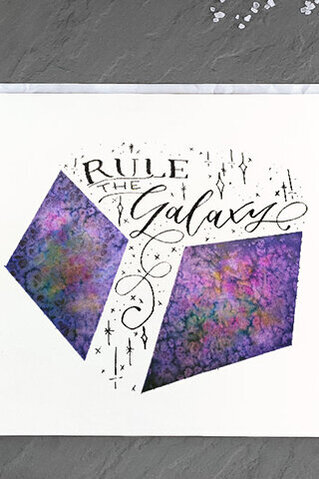Hand lettering, brush lettering, faux calligraphy – there are many names for the art of beautiful writing. What is hand lettering? What material do I need? How do I start as a beginner? - If you’re asking yourself these questions, you’ve come to the right place.
You’re already familiar with the basics? No problem! Click here for inspiration, including new lettering styles, materials, layouts, and phrases.
What is hand lettering and how do I get started with it?
Helpful tips and tricks for beginners and advanced hand lettering artists
Hand lettering is not as new as many people think. The art of beautiful writing has its origin in calligraphy. Even back then, the line between writing and drawing was blurred.
Especially in the digital world, handmade products are becoming popular again – a new revolution. People want to express their own individuality again and are not satisfied with something mass produced off the assembly line. This is why, in addition to the DIY (do-it-yourself) trend, hand lettering is also playing an increasingly important role in our daily lives. Today we can find many postcards, bags, and advertising signs with handwritten elements.
Hand lettering is also about slowing down in our fast-paced world. It takes time and practice. You have to fully concentrate on your artwork and forget the hustle and bustle of everyday life. The written word becomes a work of art, the writing itself becomes art. You can only achieve your own personal perfection with calm, patience, and focus.
Since there are endless variations and styles, the search for your own style is also a form of self-discovery. The advantage? – There is no right or wrong. Without firm rules, perfection lies in the eye of the beholder. Hand lettering is suitable for everyone and anyone can learn it. And you don’t need to have fine penmanship! As is the case in many other fields, practice is the key to success. Line by line, you work your way to perfection.
You can essentially use any pen for hand lettering. Depending on the style, different pen types are more suitable than others. A pencil, an eraser and a ruler are also good tools to have. You can use them to draw guide lines or entire phrases and correct small mistakes.
For brush lettering, you mostly use brush pens, which are also called brush markers. They have a flexible tip that allows you to vary the thickness of your lines by applying different amounts of pressure, creating a dynamic look. Brush pens are available with brush tips of different lengths and hardnesses. If you want to learn more about brush pens, you can find additional information here. You can also use felt-tip pens and fineliners to achieve a calligraphy effect by using faux calligraphy techniques.
Can’t decide? Then simply start with a brush pen with two tips, like our ABT Dual Brush Pen. You can use it to combine different lettering styles and you only need a single pen. Otherwise the Fudenosuke Brush Pen is suitable for beginners because its small hard tip is easy to control.
If you already have some practice and would like to continue to expand your hand-lettering skills, you can use more materials such as glue and glitter powder to add highlights, or try different materials with permanent markers like the MONO twin Faux Calligraphy.
Discover cool hand lettering alphabets for beginners!
Have you wanted to start hand lettering for a long time, but feel overwhelmed by the abundance of offers and find the instructions too difficult? Don't worry! We have summarised all the relevant information and free materials for getting started on one page.
Products
Filter
Produkte Filtern:
Produkte Filtern:
Produkte Filtern:
Produkte Filtern:
Produkte Filtern:
Produkte Filtern:
Produkte Filtern:
Produkte Filtern:
Produkte Filtern:
Produkte Filtern:
Produkte Filtern:
Produkte Filtern:
Produkte Filtern:
Produkte Filtern:
Produkte Filtern:
Produkte Filtern:
Produkte Filtern:
Sorting

Mechanical Pencils
Precision in pen form: the sophisticated balance and transparent casing make the MONO graph Fine the ideal tool for concentrated writing and precise corrections.
Available in various colours
from
€19.90
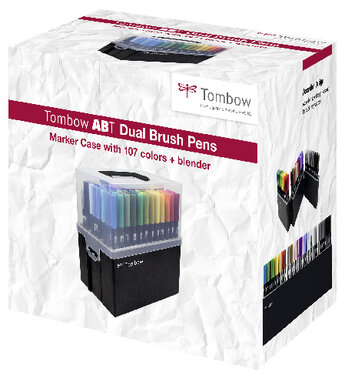
Brush Pen & Fineliner
ABT Dual Brush Pen marker case
All 107 ABT Dual Brush pens + blender pen in handy marker case
€450.00
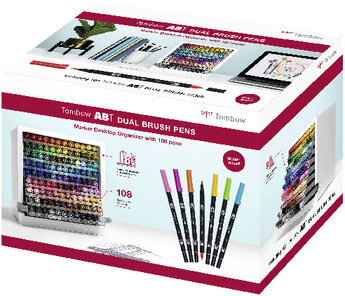
Brush Pen & Fineliner
ABT Dual Brush Pen Marker Desktop Organizer with 107 colors + blender
With the Tombow Desktop Organizer your desk will finally look organized again!
€450.00

Brush Pen & Fineliner
Art & Organising bundle: pencil case & 6 ABT Dual Brush Pens of your choice
Your creative must-have: choose 6 ABT Dual Brush Pens in your favourite colours and get the spacious pencil case in green or brown.
Available in various colours
from
€25.20

Brush Pen & Fineliner
Blended Lettering Set
The new set from Tanja “Frau Hölle” Cappell for lettering with the blending technique. Available in two color variants.
Available in various colours
from
€35.00

Brush Pen & Fineliner
Blended Lettering Set + Aquarelle paper
Only for a short time: Learn new handlettering techniques with the Blended Lettering Set + Aquarelle Paper
Available in various colours
from
€44.80
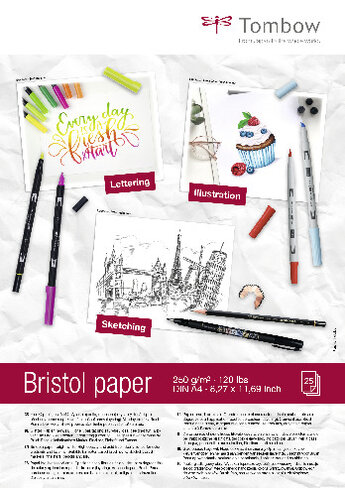
Paper & More
Bristol paper
Bright white drawing paper for illustrations, drawings, sketches and much more, 25 sheets
Size selectable
from
€7.60
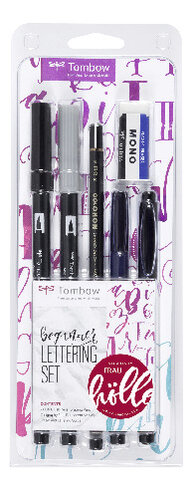
Brush Pen & Fineliner
Brush Pen Lettering Set "Beginner"
Product set for an easy start into hand lettering.
€19.00
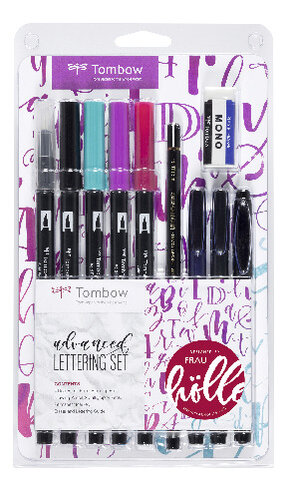
Brush Pen & Fineliner
Brush Pen Lettering Set Advanced
Take your letterings to the next level with this set of lettering material.
€33.30
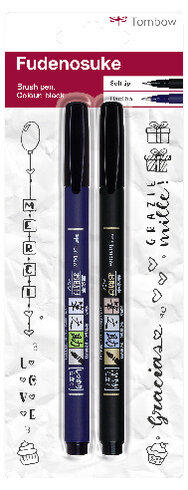
Brush Pen & Fineliner
Fudenosuke Brush Pen black blister of 2
Fudenosuke Brush Pen in a practical double pack
€6.30
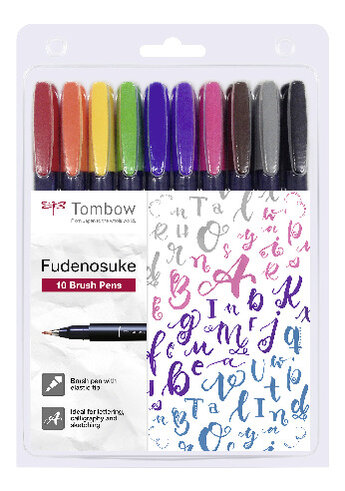
Brush Pen & Fineliner
Fudenosuke Brush Pen color set of 10
With elastic tip for variable line widths – from very narrow to very wide. Water-based pigment ink. All 10 colors in one set.
€33.00
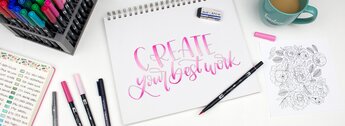
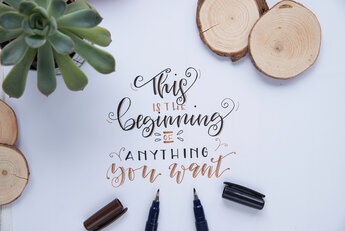

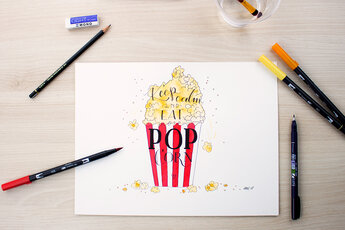
![[Translate to Englisch:] Glue LiquidGlue Lettering A creative craft scene with the words "Collect moments, not things!" on white paper. Plus a black Tombow Brush Pen and a Tombow Mono Aqua Liquid Glue, as well as black glitter powder for decorative effects](/fileadmin/_processed_/8/8/csm_Glue_LiquidGlue_Lettering_9213ed0f13.png)

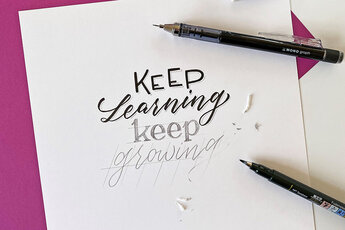
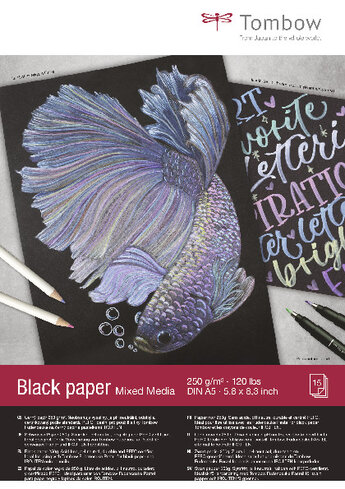
![[Translate to Englisch:] Handlettering A Playful hand lettering A with arrow guide for practising stroke guidance.](/fileadmin/_processed_/7/b/csm_Handlettering_A_9ecc617e75.jpg)
![[Translate to Englisch:] Exkurs Schriftlehre DE 01 Handlettering font "hello you" with lines and markings: Top length, centre length, bottom length, centre height, base line.](/fileadmin/_processed_/9/6/csm_Exkurs_Schriftlehre_de_01_6ca6a0cf78.jpg)
![[Translate to Englisch:] Handlettering TT FauxCalligraphy1 [Translate to Englisch:] Handlettering TT FauxCalligraphy1](/fileadmin/_processed_/f/c/csm_Handlettering_TT_FauxCalligraphy1_00e058283c.jpg)
![[Translate to Englisch:] Handlettering TT FauxCalligraphy2 [Translate to Englisch:] Handlettering TT FauxCalligraphy2](/fileadmin/_processed_/7/d/csm_Handlettering_TT_FauxCalligraphy2_c656331c77.jpg)
![[Translate to Englisch:] Handlettering TT FauxCalligraphy3 [Translate to Englisch:] Handlettering TT FauxCalligraphy3](/fileadmin/_processed_/3/5/csm_Handlettering_TT_FauxCalligraphy3_d66152a4c2.jpg)

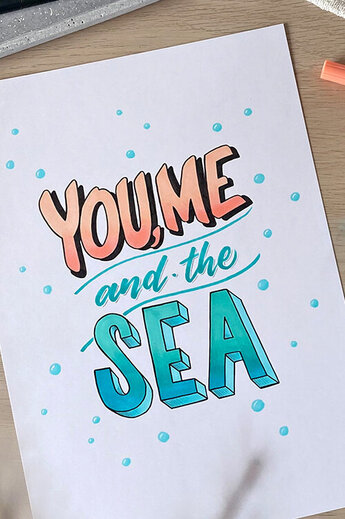

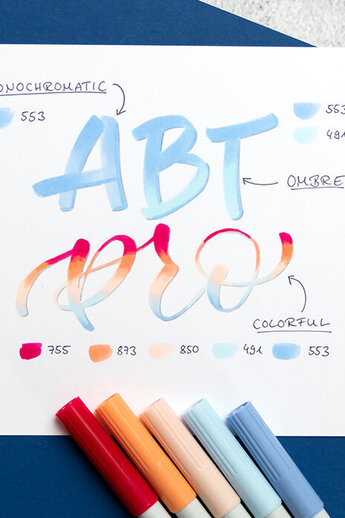
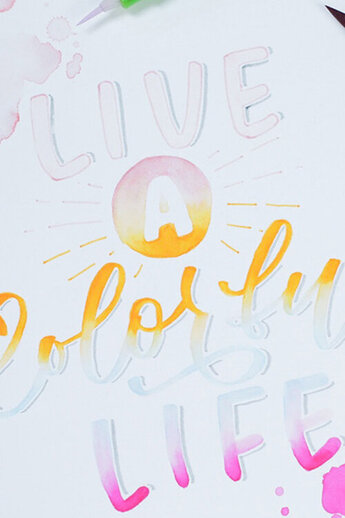

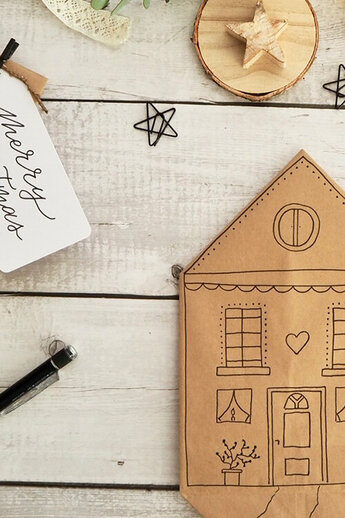
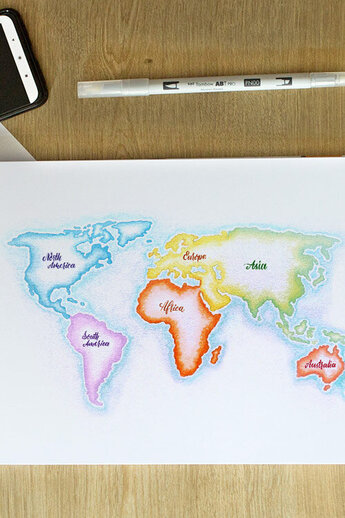

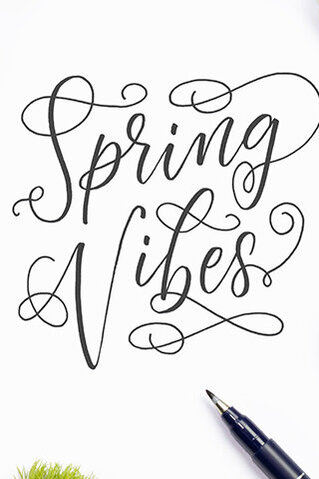

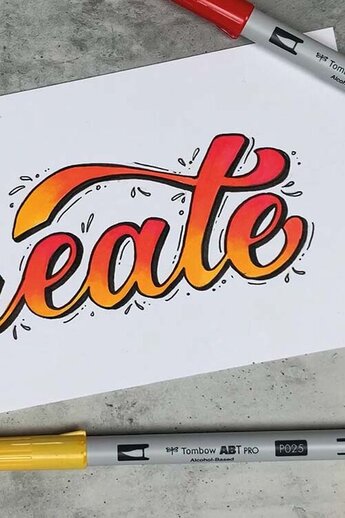
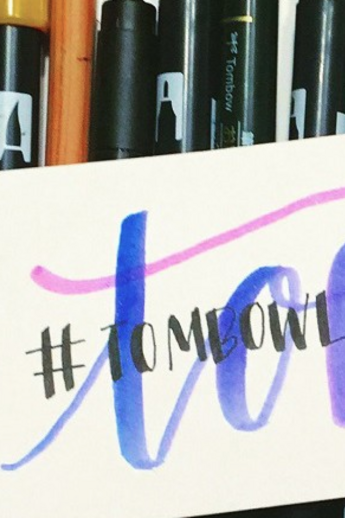
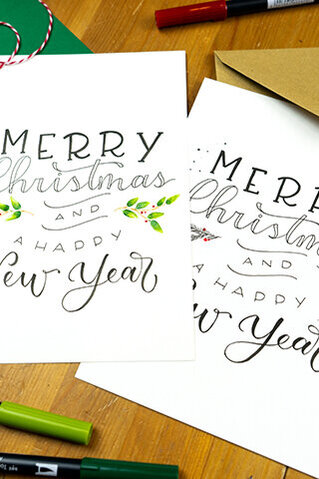

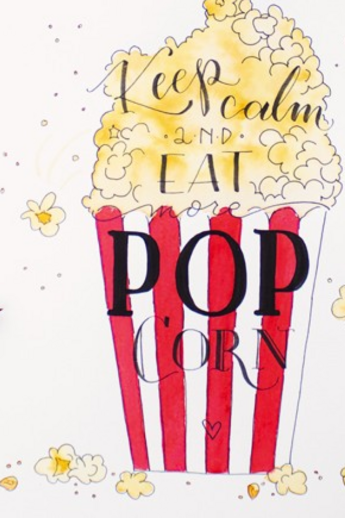

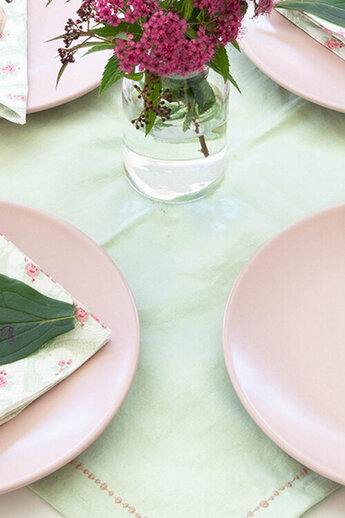

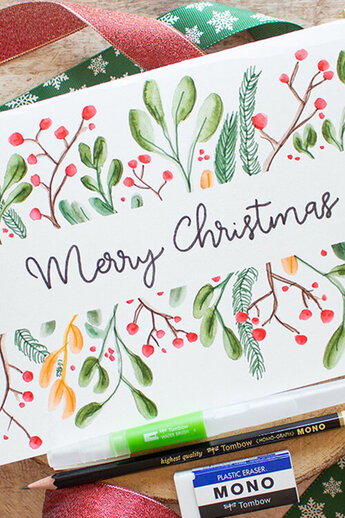

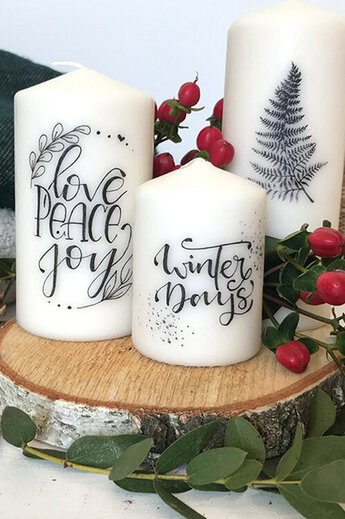

![[Translate to Englisch:] Watercolor hills Watercolour painting with purple-blue mountains, dark fir trees and pink-blue sky, created with Tombow ABT Dual Brush Pens and water technique.](/fileadmin/_processed_/5/7/csm_Watercolor_hills_512e562572.jpg)
